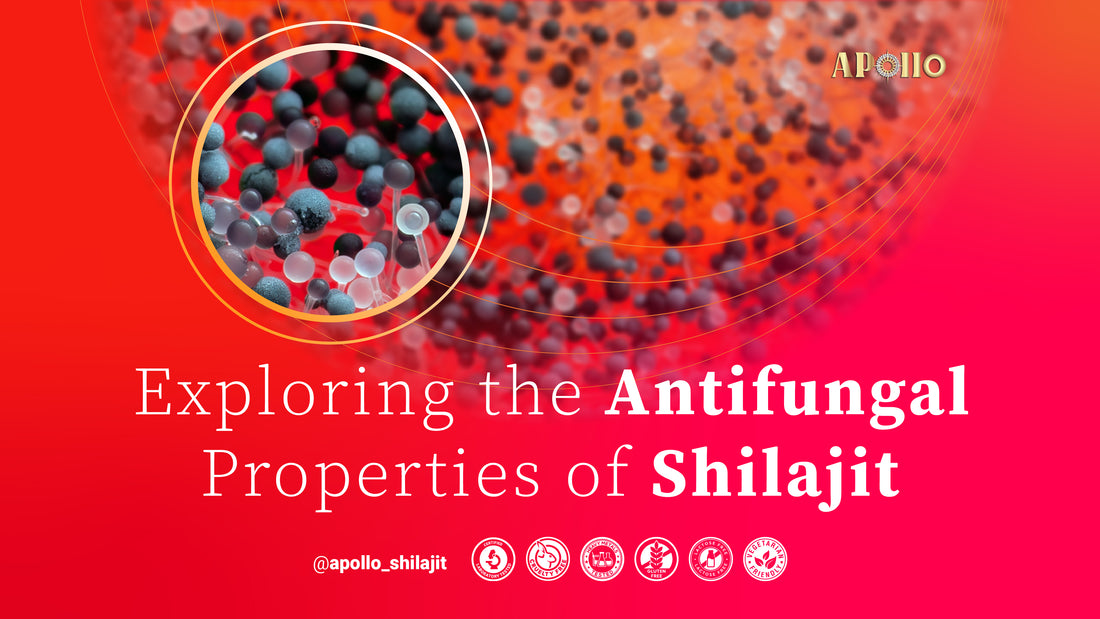
Antifungal Properties of Shilajit
Share
Welcome to our exploration of Shilajit, nature’s powerful antifungal agent! Whether you’re curious about natural remedies or just looking for safe and effective ways to tackle fungal issues, Shilajit has some amazing benefits to offer. Let’s explore Shilajit, a natural substance known for its powerful antifungal properties.
Fight Fungi Naturally
Shilajit is a potent natural substance that has shown an incredible ability to fight off various types of fungi. According to research by Shalini and Srivastava, Shilajit was able to stop the growth of tough fungi like Alternaria cajani and Helminthosporium sp. by over 95%! This means that Shilajit can be a great ally in keeping harmful fungi at bay. These findings are significant because they highlight the potential of Shilajit as a natural alternative to synthetic antifungal treatments, which can sometimes come with unwanted side effects and contribute to resistance issues in pathogens. By using Shilajit, you can harness the power of nature to address fungal problems effectively and safely [1].
Loaded with Good Stuff
What makes Shilajit so effective? It’s packed with special compounds called phenolic acids. These include tannic acid, gallic acid, and ferulic acid. These natural chemicals are not just good at fighting fungi but also offer other health benefits like reducing inflammation and acting as antioxidants. This makes Shilajit a multi-purpose natural remedy. The presence of these compounds means that Shilajit doesn’t just target fungal infections but also contributes to overall wellness by combating oxidative stress and inflammation in the body. This dual action makes it an even more valuable addition to your health regimen, providing a holistic approach to maintaining your well-being [1].
How It Works
The magic behind Shilajit’s antifungal power lies in its ability to disrupt the fungi’s cell walls and membranes. Tannic acid, one of the key components, works by binding to proteins and sugars in the fungi, effectively stopping them from growing. This natural process makes Shilajit a great alternative to chemical antifungals, which can sometimes cause side effects or lead to resistance. By interfering with the essential structures of fungal cells, Shilajit ensures that the fungi are unable to proliferate, thereby controlling the infection. This mechanism is particularly advantageous for those seeking natural treatments that are both effective and gentle on the body [1].
Perfect for Natural Health Enthusiasts
If you’re a fan of natural health and holistic remedies, Shilajit is a perfect addition to your wellness routine. Its natural composition aligns well with the principles of using gentle, effective treatments that support overall health. Plus, with its proven benefits, you can feel confident in using Shilajit to address fungal issues safely and naturally. Embracing Shilajit means integrating a time-honored remedy that has been validated by modern science, ensuring that you are getting the best of both worlds. This synergy between traditional wisdom and contemporary research makes Shilajit an appealing choice for anyone committed to a natural lifestyle [1].
Takeaway
Shilajit is more than just a traditional remedy; it’s a powerful natural antifungal agent backed by science. Whether you’re dealing with a fungal infection or just looking to boost your natural defenses, Shilajit is worth considering. Its rich array of natural compounds not only fights fungi but also offers broader health benefits, making it a versatile and valuable addition to any natural health regimen. By choosing Shilajit, you are opting for a remedy that supports your body in multiple ways, enhancing your health and well-being through its multifaceted properties. This comprehensive approach to health care is what makes Shilajit a standout option in the realm of natural remedies [1].
References
[1] Shalini and R. Srivastava, “Antifungal activity screening and HPLC analysis of crude extract from tectona grandis, shilajit, valeriana wallachi.” Electronic journal of environmental, agricultural and food chemistry, vol. 8, pp. 218–229, 2007. [Online]. Available: https://api.semanticscholar.org/CorpusID:52229320
